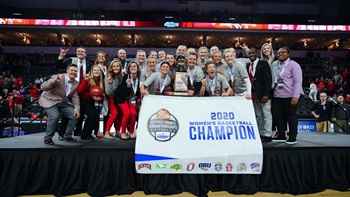Guitars from The Us National Music Museum part of unique North Dakota exhibition
The National Music Museum contributed seven of its vaunted collection of European and American acoustic guitars to this exhibit, which is dedicated to the "renaissance" of independent luthiers – makers of stringed instruments. Among the donations from the National Music Museum are guitars from the 17th and 18th centuries. These instruments, along with guitars from across the Midwest, are on display now through June 7.
"The quality of these instruments is truly extraordinary," said Sarah Richardson, curator of musical instruments at the National Music Museum. "They range from decorative, handmade early guitars to traditional, modern guitars."
The oldest piece in the collection donated to the "Art of the Guitar" exhibit is a 1640 Matteo Sellas guitar. Sellas, of Venice, Italy, constructed this beautiful instrument – part of the Witten-Rawlins collection at the National Music Museum – with unique features, including a four-tiered wedding cake parchment rose sound hole design. Another 17th century instrument, a guitar by Alexandre Voboam of Paris, France, features inlaid ebony and ivory, and five double sets of strings. A couple of Richardson's favorites, an Antoine Aubry guitar from 1779 and a harp-guitar by Gibson Mandolin-Guitar Co. from 1916, also made their way from Vermillion to Fargo for the exhibition.
"The 18th century is known for its beautiful instruments and this guitar from 1779 is no exception," she admitted. "The harp-guitar is very unique. It has harp strings on the side but it’s very much a guitar. These guitars were more commonly used in mandolin orchestras, which were popular in the early 20th century."
Other guitars featured in the exhibition include an 1850 guitar by C.F. Martin, New York; a mint condition Model D-28 C.F. Martin guitar from 1941; and a 1930s Gibson guitar, the L-30, that cost $30 when released in 1935 – less than a tenth of the cost of Gibson’s top-of-the-line Super 400 model.
"Art of the Guitar" focuses solely on handcrafted instruments along with guitars of historical significance. Several world class luthiers from the Midwest are represented at the exhibition. Attention to detail, according to Richardson, was prevalent in the making of guitars before big guitar companies came along and began mass producing the musical instruments. Sound, design and unique but simple artwork were luthier trademarks.
While Richardson declined to elaborate on the total value of the guitars loaned to the "Art of the Guitar" exhibition, she described the craftsmanship as one-of-a-kind and the instruments as irreplaceable.
"They are very significant instruments, obviously," she added. "And they would be very hard to replace."
Founded on the USD campus in 1973, the National Music Museum and Center for Study of the History of Musical Instruments features more than 14,000 instruments, including 200 guitars that range from modern guitars to antiquated stringed-instruments, including the Witten-Rawlins Collection of Stringed-Instruments that includes guitars, violins, cellos and lutes.
For additional information about the exhibition, "Art of the Guitar: A Luthier's Renaissance," please visit www.plainsart.org/exhibitions/exx.php?x=200902_guitar. To learn more about the National Music Museum on the campus of The University of South Dakota, go to www.usd.edu/smm/.
An image of the Sellas guitar is available for download at www.usd.edu/urelations/images/Sellas_guitar.jpg. A photo of the Voboam guitar is available for download at www.usd.edu/urelations/images/Voboam_guitar.jpg. To download a photo of the Aubry guitar, please go to www.usd.edu/urelations/images/Aubry_guitar.jpg. A photo of the 1916 harp-guitar is available for download at www.usd.edu/urelations/images/Harp-guitar_Gibson.jpg. You can also request photos of the 1935 Gibson, and the 1850 and 1941 Martin guitars by contacting Marketing Communications and University Relations at (605) 677-6258.
Detailed images of the instruments are available from the National Music Museum's Web site at www.usd.edu/smm/ and high resolutions images are available by contacting the museum at (605) 677-5306.


